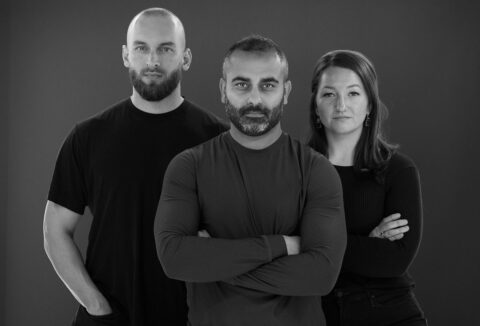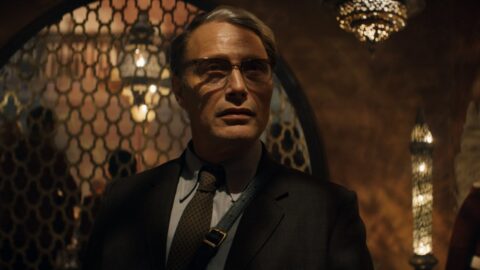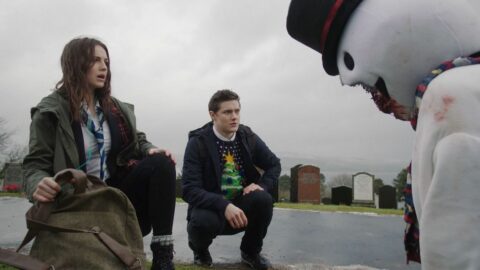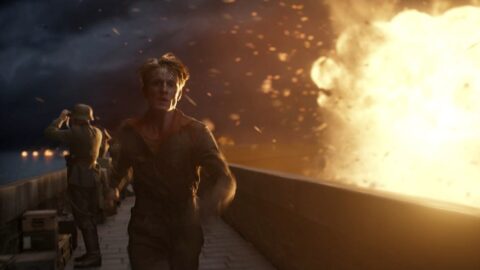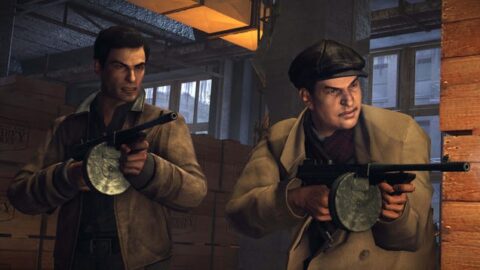Caroline Chalmer Contributor Caroline Chalmer is the CEO and founder of Finematter, a circular marketplace revolutionizing the jewelry industry. She is a seasoned fashion and sustainability leader with […]
Baldur’s Gate 3 Patch Brings Over 1,000 More Tweaks And Fixes
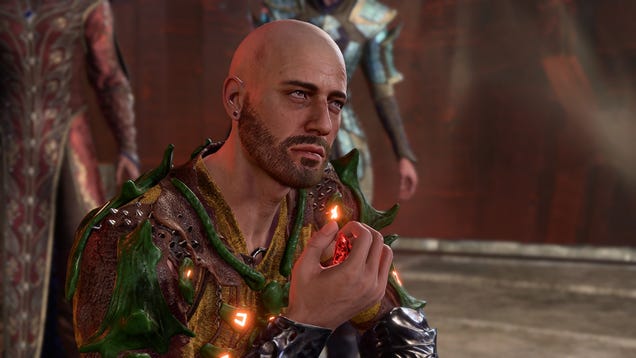
Larian has dropped another colossal patch for its hugely successful Dungeons & Dragons role-playing game, Baldur’s Gate 3, and it brings over 1000 individual fixes and tweaks to the game just as we head into its three-month anniversary.

When generative AI cyberthreats arrive, Wraithwatch will be ready and waiting
Generative AI is pervading just about every industry already, whether we like it or not, and cybersecurity is no exception. The possibility of AI-accelerated malware development and autonomous […]
How to stream ‘Indiana Jones and The Dial of Destiny’
“Indiana Jones and The Dial of Destiny” is coming to streaming. Here’s everything you need to know.

If you didn’t get a chance to reunite with everyone’s favourite whip-touting, snake-hating archaeologist in the cinema, you’ll soon be able to stream Indiana Jones and the Dial of Destiny at home.
Released 42 years after the very first film, 1981’s Raiders of the Lost Ark, Indiana Jones and the Dial of Destiny sees Harrison Ford return to his famous role for another treasure-hunting, tomb-raiding, wise-cracking adventure — and this time, there’s added Phoebe Waller-Bridge.
The series’ fifth instalment has so far only been available to watch through video on demand (VOD), but it’s coming to streaming soon, so if you’re keen for a night in with the professor, here’s everything you need to know to watch it at home.
When and where is Indiana Jones and the Dial of Destiny releasing on streaming?
Indiana Jones and the Dial of Destiny has been available to watch at home since Aug. 29 but only through VOD platforms including Apple TV, Google Play, and Prime Video (with five behind-the-scenes featurettes, giving big DVD special features energy).
But finally, Dial of Destiny will be streaming on Disney+ on Dec. 1.
On the same day, the streaming service will also drop a Disney+ documentary directed by Laurent Bouzereau called Timeless Heroes: Indiana Jones and Harrison Ford, which tracks the actor’s path to Hollywood and his iconic role, and how the character has remained a steadfast face of pop culture. Ford was interviewed for the documentary as well as Steven Spielberg, George Lucas, Kathleen Kennedy, Frank Marshall, James Mangold, and more, so it’s a good one to watch after the film.
What is Indiana Jones and the Dial of Destiny about?
Directed by James Mangold, the fifth instalment of Steven Spielberg’s adventure franchise connects Indy’s past and present with a history-altering device, some de-ageing tech, and that glorious score.
Nearing retirement from his heady days of academic and archaeological adventuring, Dr. Henry “Indiana” Jones Jr. is ready to hang up his signature hat. But suddenly, he’s reunited with his goddaughter Helena Shaw (Phoebe Waller-Bridge), whose father (Toby Jones) located Archimedes’ Dial decades ago during World War II — there are scenes of digitally de-aged Ford as a young Indy that will send you right back to Indiana Jones and the Last Crusade.

Credit: 2023 Lucasfilm Ltd. & TM
With her young sidekick Teddy Kumar (Ethann Isidore) and Indy begrudgingly in tow, Helena’s on the hunt for the device, which can alter the events of the past. But they’re not the only ones after the dial, as Nazi scientist Jürgen Voller (Mads Mikkelsen) is hot on their heels. Their adventure will take them through New York, Tangier, Sicily, and more, through tombs, shipwrecks, car chases, and history itself.
Though Dial of Destiny faced trouble at the box office, the film was lauded by critics, including Mashable’s film editor Kristy Puchko, who writes, “Indiana Jones and the Dial of Destiny is a wondrous return to form for this franchise, as well as a wildly entertaining film fit for the whole family.”
And folks, there’s no post-credits scene, so once the film’s done, you can go right back to your life not fighting villains atop speeding trains.
Who stars in Indiana Jones and the Dial of Destiny?
Harrison Ford, of course, leads as our titular hero, alongside a truly welcome addition to the franchise, Phoebe Waller Bridge as Helena, with Ethann Isidore as her pickpocketing young friend Teddy. Mads Mikkelsen is characteristically superb donning his villain hat, while Toby Jones doesn’t waste a second as Indy’s Oxford professor pal Basil Shaw. Antonio Banderas steals his scenes up as frogman Renaldo, Indy’s old mate and diving extraordinaire.
Familiar faces also return to the franchise including John Rhys-Davies as Sallah, who’s hit the trail with Indiana in Raiders of the Lost Ark and Indiana Jones and the Last Crusade. And one of the biggest cameos in the film is that of Karen Allen as Marion Ravenwood, who first appeared in Raiders of the Lost Arc then returned for 2008’s Indiana Jones and the Kingdom of the Crystal Skull.
To watch Indiana Jones and the Dial of Destiny, you can stream the film from Disney+ by hitting that button below.

Opens in a new window
Perfect movie to kick off the Christmas season: ‘Anna and the Apocalypse’
Directed by John McPhail, “Anna and the Apocalypse” is a musical holiday horror movie that deserves your attention. “Dickinson”s Ella Hunt stars.

Do you like Christmas movies, but wish they were gorier? Are you a fan of zombie flicks, but yearn for a zombie musical? Do you want every musical you watch to be full of holiday cheer? Perhaps with some high school drama tossed in the mix? Then, you’re going to want to witness Anna and the Apocalypse. Directed by John McPhail (Dear David) this Christmas-set zombie musical spectacular from 2018 is the perfect transition film to shift horror lovers from spooky season to Yuletide scares.
What’s Anna and the Apocalypse about?

Credit: Orion/Vertigo/Kobal/Shutterstock
Christmas is just around the corner in the small Scottish town of Little Haven, and Anna (Dickinson‘s Ella Hunt) is at odds with her father (Mark Benton) about her post-high school plans. Before university next fall, she wants to travel the world. But her dad thinks that would be a waste of time. Unfortunately, the zombie apocalypse doesn’t care about family squabbles. It hits right before Christmas — and right before Anna and her father can reach any kind of resolution.
To save her dad and make it out of town alive, Anna teams up with her devoted best friend John (Malcolm Cumming), snarky student activist Steph (Sarah Swire), plucky aspiring filmmaker Chris (Christopher Leveaux), and school jerk Nick (Ben Wiggins). What follows is a mad scramble for survival with a healthy dose of Broadway flair.
Anna and the Apocalypse is a comedy that takes its musical numbers seriously.

Credit: Orion/Vertigo/Kobal/Shutterstock
The musical numbers are the highlight of Anna and the Apocalypse, launching an already-enjoyable Christmas horror movie into the stratosphere. Take the earnest and angsty “Hollywood Ending.” Sung by students in their school cafeteria and complemented by lunch tray choreography, this tune with High School Musical vibes reminds us that life is not at all like the teen movies — something that Anna and the Apocalypse‘s ending takes to heart.
Also of note is the cheerful, poppy “Turning My Life Around.” In this chipper song, Anna and John walk/dance to school, earbuds in and singing their hearts out —oblivious to the zombie carnage playing out all around them. It’s a delightfully ironic scene, one that calls to mind a similar sequence of apocalyptic unawareness from Shaun of the Dead.
My favorite song on the whole soundtrack has to be Nick’s “Soldier at War,” an epic zombie-killing anthem reminiscent of “Eye of the Tiger.” The number is Anna and the Apocalypse at its most fun. Nick and his fellow bullies kill zombies using everything from bats to watermelons to video game controllers. On the one hand, it’s an absolute banger of a song that will no doubt get stuck in your head. On the other hand, it’s a ridiculous example of posturing in the face of death — with Wiggins selling the arrogance with charismatic gusto. However, Anna and Steph’s unimpressed expressions are an excellent contrast to Nick’s musical bragging.
Anna and the Apocalypse has fun with holiday horror — and gore.

Credit: Orion/Vertigo/Kobal/Shutterstock
This being a zombie movie, there’s plenty of violence to go around — only here it comes with a Christmas twist. Anna and John encounter zombies dressed as snowmen and Santa. The undead crash the school’s holiday concert and invade a Christmas tree emporium. Anna’s weapon of choice in the final act is a big, sharpened prop candy cane, because why not? It’s a gleefully unhinged way to get into the holiday spirit.
In addition to all the genre-melding, Anna and the Apocalypse makes a real effort to examine how teenagers on the brink of adulthood come to terms with the apocalypse. Turns out the sudden arrival of zombies really puts your life in perspective. Anna worries about her future and her relationship with her father. Meanwhile, John struggles to admit his romantic feelings for Anna in what ends up being a solid subversion of the Nice Guy trope.
These more dramatic emotional beats don’t always land. For instance, a subplot involving a control freak teacher (Paul Kaye) escalates unbelievably quickly. But Anna and the Apocalypse certainly gets points for trying. Using a zombie apocalypse, Christmas, and catchy tunes to tackle teenage anxieties is no small feat, and the movie sometimes falters as a result of its own ambition. Fortunately, you’ll be too distracted by fun set pieces and the cast’s fully committed performances to care that much.
So sharpen your candy canes, warm up your vocal cords, and start your December off right with Anna and her friends. And zombies.
Anna and the Apocalypse is now streaming on Shudder, and is also available on Apple TV+, Amazon Prime, Vudu, and more.
UPDATE: Oct. 31, 2023, 10:47 a.m. EDT This post has been updated to reflect Anna and the Apocalypse’s current streaming availability.
Review: ‘All the Light We Cannot See’ is a sweet, if heavy-handed, series
Based on Anthony Doerr’s novel, “All the Light We Cannot See” is a Netflix series about two young people in World War II. It releases November 2.

August, 1944. American aircraft bomb the Nazi-occupied French city of Saint-Malo. In a townhouse, a blind girl reads Jules Verne over a radio broadcast, waiting for her great-uncle and father to come home. Not far from her, in an upscale hotel-turned-fortress, a German soldier listens to her words. Their lives are inextricably connected and are about to become even more so, but as the bombs rain down, they are unaware of the forces that tie them together.
So begins Netflix’s All the Light We Cannot See, opening in near-identical fashion to Anthony Doerr’s Pulitzer Prize-winning novel on which it is based. Spanning years and much of the European continent, Doerr’s novel is a densely layered war epic. Cursed gems, radio technology, and secret codes all play a part within its many, many pages.
Given the novel’s heft and immense popularity, adapting it for the screen presents a tricky challenge — one that director Shawn Levy (Stranger Things, Free Guy) and screenwriter Steven Knight (Peaky Blinders, Serenity) mostly rise to meet. The four-part limited series is unable to replicate Doerr’s lyrical prose, resulting instead in some fairly heavy-handed dialogue. However, it more than makes up for that shortcoming with its genuine earnestness and high-quality production, which results in an adaptation that is cinematic and sweet in equal measure.
All the Light We Cannot See is part war story, part coming-of-age tale.

Credit: Netflix
While All the Light We Cannot See opens with a boy and a girl weathering the bombing of Saint-Malo, there are several years’ worth of story leading us to that point. The series winds back the clock to explore each character’s childhood, using the events in Saint-Malo as a framing device. Notably, the series spends far more time in Saint-Malo than in the past: one of the many changes Knight’s adaptation makes from original book. However, the chronological back-and-forth recalls the structure of Doerr’s novel, all while creating a sense of inevitability: Everything in the boy’s and girl’s lives has been leading to these fateful few days in Saint-Malo.
The girl is Marie-Laure LeBlanc (Aria Mia Loberti). Before Saint-Malo, she lives in Paris with her father Daniel (Mark Ruffalo), the master locksmith at the Museum of Natural History. He makes her a scale model of their neighborhood to help her learn its roads by touch, and he tells her about the many wonders of the Museum. One such wonder is the famed jewel known as the Sea of Flames. Legend has it that whoever possesses it will live forever, but that their loved ones will suffer great misfortune. (The greatest misfortune that Marie’s portion of All the Light We Cannot See suffers are the British accents put on by all these supposedly French characters. A common trait in period movies, I know, but an aggravating one nonetheless.)
Luckily, what these scenes lack in accent realism (charming as he is, Ruffalo’s is extra shaky), they make up for in whimsy, whether that’s Daniel teaching a young Marie (Nell Sutton) how to use the Paris model or Marie listening to illuminating radio broadcasts from a figure known simply as “the professor.” Even when the Nazis’ invasion of Paris forces Marie and Daniel to flee to Saint-Malo to live with Daniel’s Uncle Etienne (Hugh Laurie), Marie seeks out the professor’s broadcast wherever she can.
The boy listens to the professor, too. He is Werner Pfennig (Louis Hofmann), a German orphan who’s a whiz at building and fixing radios. His genius catches the eye of an elite Nazi academy, where Werner faces unspeakable cruelty. The only things that keep him believing in the good of humanity, even as he’s sent on missions to eliminate illegal radio transmissions, are the professor’s words of guidance and kindness. Nations apart, both Werner and Marie look to those words as lifelines to hang on to as the world grows dark around them.
Marie and Werner’s discussions of light and darkness can tend towards being too on-the-nose, especially when you’ve heard variations of them over and over again. However, both Loberti and Hofmann wear their hearts on their sleeves, each performer creating a portrait of hopeful, clear-eyed youth. It helps that both actors are relative unknowns to U.S. audiences. Hofmann is most recognizable for his work in the German series Dark, while Loberti is a complete newcomer. Their takes on Marie and Werner shine throughout the series, and while they rarely share the screen, All the Light We Cannot See makes sure to draw parallels between their resourcefulness, kindness, and perseverance.
All the Light We Cannot See is a feast for the senses.

Credit: Netflix
In addition to the strength of its two leads, All the Light We Cannot See benefits from a beautifully realized world. While much of the series was shot in Budapest and Villefranche-de-Rouergue, exterior shots of the real Saint-Malo help ground us in the city, from its narrow streets to its massive wall extending along the sea.
All the Light We Cannot See also relishes in the tactile — a choice that drops us right into Marie’s point of view, as touch is one of the primary ways in which she navigates the world. We watch young Marie examine the nooks and crannies of the wooden Paris model with her hands, and later reach for familiar touchstones in Etienne’s house, like banisters or tables and chairs. Thanks to this focus on texture, we become extra receptive to everything from bomb shrapnel to the rubble-strewn across Saint-Malo.
Equally captivating is the show’s use of that all-important titular light. Whether it’s the sun’s golden rays diffusing through a room or a campfire keeping the darkness at bay, light is everywhere in All the Light We Cannot See. The show’s nighttime scenes in particular make for a much-needed antidote to the majority of overly dim night scenes in film and TV today. Here, crisp shadows and blue hues win out over shapeless darkness. (Fitting, given the show’s many speeches about how light always overcomes the dark.) A sequence in which sinister Nazi gemologist von Rumpel (Lars Eidinger) hunts Marie through a darkened grotto is especially representative of this feat. It establishes the presence of light through the reflection of the moon on the water and the explosion of bombs outside — a juxtaposition of natural beauty and wartime horror in full effect.
That same dichotomy between beauty and the horrors of war runs throughout All the Light We Cannot See. The Sea of Flames is a stunning gem, shining as if lit from within, yet its supposed curse — and von Rumpel’s dogged obsession — make it more of a danger than something to be treasured. James Newton Howard’s soaring score contrasts with the whistles and explosions of bombs and artillery. But the most prominent source of duality in All the Light We Cannot See is none other than the radio. Nazi officers and French resistance members alike refer to the radio as a tool of war, but for Marie and Werner, it’s a means to connect with others and to feel less alone during a time of great strife. The latter is the path All the Light We Cannot See emphasizes again and again, rejecting any cynicism in favor of bringing an optimistic message to beautiful, blinding light.
All the Light We Cannot See premieres on Netflix Nov. 2.
UPDATE: Oct. 31, 2023, 11:24 a.m. EDT All the Light We Cannot See was reviewed out of its world premiere at 2023’s Toronto International Film Festival.
PS Plus November Offerings Are Pretty Underwhelming
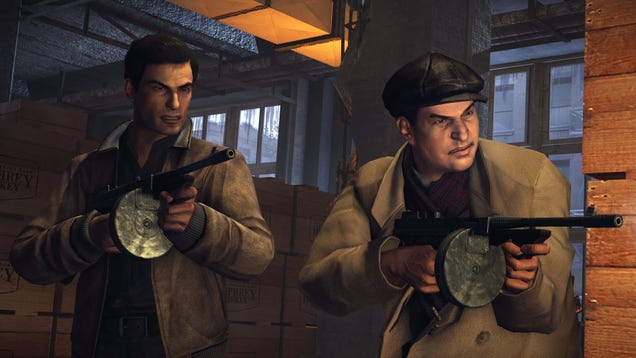
Sony announced November’s free titles for game subscription service PlayStation Plus in a November 1 blog. The games will be available to add to your library November 7 through December 4, though PS Plus’ typically limited play window might not be enough to convince subscribers to rush to download this month’s main…

How I Choose Between Xbox Series S And PS5

On the frontline of the console wars, it’s difficult to find perspective. Whether you’ve already chosen a side and are deep in the trenches, or you’re just trying to figure out if an Xbox Series X (see on Amazon) or PS5 (see on Amazon) makes a better Christmas gift this year, you’d be hard pressed to find a measured,…

Max Payne Remakes Can Reinvent Remedy’s Iconic Series
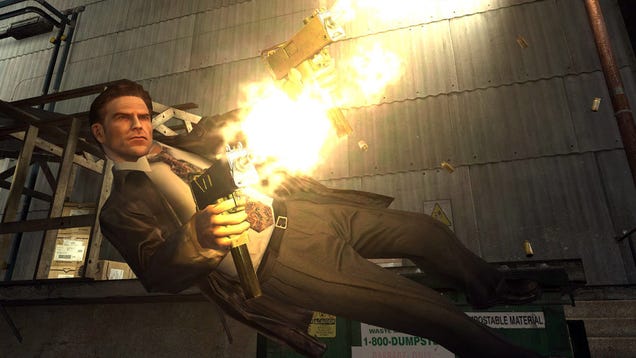
The Max Payne remake project has entered “production readiness,” according to developer Remedy Entertainment in a message to investors.

China’s tech vice minister calls for ‘equal rights’ at global AI summit in UK
Despite the ongoing technological decoupling between China and the West, both sides are converging to discuss the threat that runaway artificial intelligence may pose to humanity. Wu Zhaohui, […]


